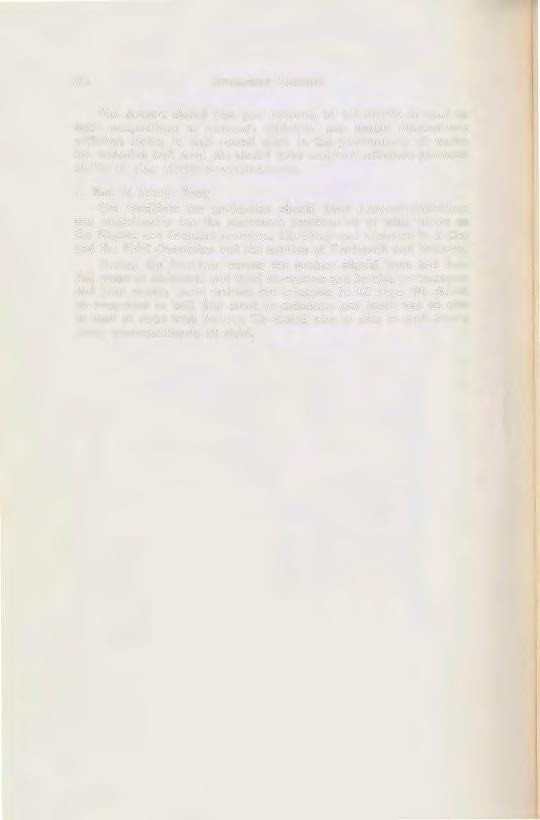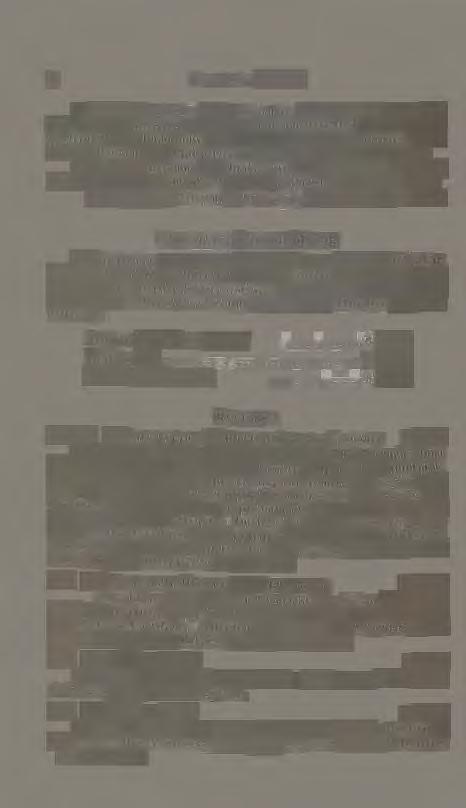
34 minute read
Sociology and Psychology
9,
O'ITBRBErN CoLLBGE
A major in Religion and Philosophy conalsta of 30 hOUl'II a:nd shall include: Religion 201-202 or Religio.n 203-204, one 300 course, preferably aof; Philoaophy .201, 204. and 801 plus i additional holll'I each in Religion and Philosophy selected from 300 or 400 courses.
A minor in Religion and Philosophy shall consist of 18 ho1lS. and shall Include the numbered coursee required itt the major above. ·• rniuor eitl\er in Religidn or Philosophy shall consist of 15 hours.
CHRISTIAN SEavICB MINOR
The foll,owfo.g oourses rnay be counted as a minor in Christian Service. This minor is intended for those students who do n&t expect to become vocational religious workers, but who wish to share eff«· threly in the religious leadership of their local chu.rel\"- com-Ul!Jllitiea.
lteligion 201-~2 or 203-204 ___ .:.6 hours
Religion 307 ________________________ 3 hourz Church Music 103-104 __ _ ___ , ______ 6 hours
RELlGlON

201402, INr&ODUCl'ION To BJBLIC.U.Lln: .. ND TsOUOllT 6 h""-' 8
The purpose &f thi1t eourse is to help the student understllnd how the Bible looks at life, and gain facility in reading and in~ 1ng the Bible in the light of pr~eitt-day ~rie:Qc:e., and n*IJ. During ~he first semester selected ~kB and passall'l!s from the Old Testament Will be studied as representative of the best in Hebrew and Jewish life and thought. Dtiring the second semester typmal New Testament writiilga wtll be examined in tlie light of firllt-eentm'Y conditions in an effort tt> understand the meaning and truth of the Christian faitn. Pterequiatte for 202 is 201.
203. OU> TESTAMENT HISTORY AND LITERATURE. 8 hoKn \ introductory study of the development of religious and ethical ideas and Practl~ of t;lie l:Jebrew people as these ,u-e found in the Old Testament wtitingtt. Attention is g1Vl!tl' t'o the Teligiona of the peoples with whom the Uebr.ews we:re iri close c:ootact.
204. THE LIPI!l OP J,:gus. 8 hour,
Tbe stud,' of t1'e li,fe of Jesus follows a 'brief survey of the intertestament period of Jewish ,liii;torN. 301. Tm: Ltn OF PAUL. 8 hou.r,
A stud:, of the life and letters of Paul with special attention to the non-Jewish environment of the early Christian church. Altematee ith course 803,
CouaBES OF INSTBUCTION 97
30f.. THE liEBBEW PBoPHETS.
hOt&t'8
An introduction to the prophetit litel'atuN, with study of selected writings of the prophets. Alternates with course 304.
30'3. TUE TEACHING OF JESUS.
An attempt to d,i~ver the distinctive ethical and religious content of J'esus' teaehl-qg. (May be talcen_ in ple,ce of course 204 by permission of instructor.) Alternates with course 801.
304. OLD '1'1:sr.uu:NT POBTKY ,AND WISDOM LITERATVU. 8 hOllrt1 A study of selected P-aalma, Job; and other Wisdom literature of
the Old Teatament. Alternates with course 802.
305; KON-Cmns-ri.AN RELIGIONS OF TODA\'. 3 kOUT'8
This course seeks to help the student discover the religious and ~thical ideas and ideals of the non-Christian religions which are an unportant part of our world situation. Thia course is also recomlllended as prepa'ratioh for Philosophy of Religion.
307. Pa.INCi.PI.ES OF RELIGIOUS EDUCATION. /J houf'B
This course provides a survey of the field. of religious education. It 8leeks to aequaint the 81:udent with the underlying philosophies of '98.riOUII approaches to the problems of religious education, and the agencies and teehtd'ques for religi:ou• educatlion.


401. 'lag HlsToaY OP THE BmLil.
6 ho1iN
An introductory study of the Ol'igin of the writinge of the Old Tatmnent and of the New Testament; the selection ot these writings as sacred literature; and the m.t.ory, of our English vetsicms of· the Bible.
PHU,OSOPHY
201. INTRODUCTION TO PHILOSOPHY. 3 h""-7'8
A 11)!,tjuna.tic survey of the problems and methoda in pbilaaophy and their relation to science, religion and society •
204. ETe:1cs. /J hPur,
A study of mora\itty allld ethical tbaorB iin. ihe Hght of. their historical development. Contemporary practical problems. 301. LoGic. ll hov.f's
The fundamentals of claesical and modern logio. The basic J• n • clplm of reasoning.
3CI~. l11STORY OF 'PaILOSOPHY. 3 koun
Ancient and Medieval. A rpyatewat,ic revie"' of philosophical theory from the pre-Socratic;s to the time of Descartea.


98
OTTERBEIN CoLLEGE
304. HISTORY OF PHILOSOPHY. 3 n.ours Modern. Continuation of course 303. Prerequisite: Philosophy
303.
306. PHILOSOPHY OF RELIGION. 8 hours
A study of the meaning of religion and the principal religious teachings, with particular emphasis on the Christian religion. Prerequisite: Philosophy 201. Offered in alternate years.
308. AEsTHETICS. 3 hours
A study of the nature of beauty and the origin and nature of art. Prerequisite: Philosophy 201. Offered in alternate years.
401 or 402. CONTEMPORARY PHILOSOPHIES. 8 hours
A study of important philosophical themes, with their proponents, and the relationships to social issues. Prerequisite: Philosophy 303 and 304.
SOCIOLOGY AND PSYCHOLOGY
Faculty: Associate Professor Lovejoy, Chairman; Assistant Professor Combs; Instructor Harrison.
A major in Sociology shall consist of twenty-four hours including Sociology 305. In addition, all majors in Sociology are required to take one semester of Mathematics 131 or 132 (Statistics).
A major in Psychology shall consist of twenty-four hours. In addition, all majors in Psychology are required to take one semester of Mathematics 131 or 132 (Statistics).
A major in the combined fields of Sociology and Psychology shall consist of at least 33 hours and must include the following courses: Sociology 201, 202 and 305; Psychology 201, 202 and 304; Mathematics 131 or 132 (Statistics); and six additional hours in Sociology and six in Psychology.
It is recommended that students taking a minor in Sociology or Psychology should take one semester of Mathematics 131 or 132 (Statistics).
A minor in either of the fields shall consist of at least fifteen hours.
A minor in the combined fields of Sociology and Psychology shall consist of eighteen hours and must include the following courses: Sociology 201, 202; Psychology 201, 202, 304.
SoCIOLOGY 201. INTRODUCTION TO THE STUDY OF SOCIETY,• B hours
This course is open to all students except freshmen. It is a study of the elemental social facts and forms of control in human relations; the development of culture and institutions; and the direction of social change through guidance and planning.
COURSES OF INBTRUCTIO uo
202. SoclAL INSTITUTIONS AND SOCIAL PROBLEMS.•
A study of the development of the community and its institutions; the physical and social forces that determine the distribution of population; social problems arising incident to social change; social disorganization as over against social planning and intelligent community organization.
204. MARRIAGE AND THE FAMILY. 8 houra
A study of the historical development of the family; its functions, interrelations and organization; with special emphasis on preparation for marriage, adjustment in marriage and the changing functions of the modern family. Open to all students except freshmen.
301. RACIAL AND CULTURAL RELATIONS. 8 hou.ra
A study of racial and cultural characteristics and origins of the people of the United States and other countries; cultural interrelations and conflict between various groups; programs and possibilities of adjustment. Prerequisite: Sociology 201 and 202.

302. CRIME AND ITS SocIAL TREATMENT. 8 hours
A study of crime and the criminal; a history of punishment; modern penal institutions; crime prevention and the social treatment of the criminal. Prerequisites: Sociology 201 and 202. Alternates with 306.

303. RURAL-URBAN SocIOLOGY. 8 houri
A study of the historical backgrounds of rural life; the development of the modem city; rural-urban America today; rural-urban attitudes, interrelations and interdependencies. Prerequisite: Sociology 201 and 202. Alternates with 309.
306. HISTORY OF SocloLOGY. 8 hours
A study of the emergence of sociology as an organized body of materials dealing with the antecedents of social thought and its development in terms of leading theories; men who promoted them and the organized movements of society. Prerequisites: Sociology 201 and 202. Alternates with 307.
306. CULTURAL ANTHROPOLOGY. 8 hou.ra
A study of social and cultural origins, primitive social control, the primitive background of modem folkways, the mores, community, and institutional life. Alternates with 302.
307. INTRODUCTION TO SOCIAL WORK.
A study of the fields of social work; theory and practice of social work; social agencies-public and private. Institutions will be visited and, where possible, field work will be arranged. Prerequisites: Sociology 201 and 202 and General Psychology. Alternates with 306.
100
OTl'EIUIEJN COLLEGE
309, SoclOLOGY OF REtlGION.
J hours 'A. study of the 11tructural and dynamic aspects of religion as it affects human personality, grottps, institutions, value systems, and the general society, especially on the American scene. Prerequisite.: Sociology 201 and 202, Alternates with 303.
403-404. INDIVIDUAL WORK.
Thia may include field work at a recognized social welfare, agency r iMtitu~ion, .library research iA a field not ordinarily offered. or eQI.Jlirical research of a community or institutional type. For specific and detailed instru~9ns, consult instructor. Advanced standing and 1 oermisaion of the instructor required.

PSYCHOLOGY 201. GENERAL PS'YCHOLOGT I. 8 houn
An introductory course prerequisite to all other courses in the department. Consideration of tha scientific approacli to problems of behavior with special emphaaia upon ~,-ime]ltal findings dealing with feelinp~ 8el).15atic;ms, emotlona, ~tivations, learning retentiQD and transfe:r: of l~g. A brief i,urvey of response mechanisms, ,md heredity will be included. Required for Education students.

202. GENERAL PSYCHOLOGY II. 8 hoKn
A continuation of Paychology 201. Special consideration will be given to vision. audition, other senses, perception, paychomstric meuarementr aWtodes; eocial relationa. advanced material covering incli-vidual differences, personality and personalit,- measuremeat. La.boflltory fee, $1.50.
203.. EouCATIOHAL PSYCHOI.OOY'.
For information about this cotrrse see Education 208.
8 hours
201, LEADERSHIP PsYCHOUIGY. l Mtif'
A atudy of the psychological and sociological aspectB of group leaderahip with practical application t.o ~c ~pus situaticm& 1 '1 \D to women qnly,
302. ABNOBMAL PBYCJtOLOGY.
3 Aoun
Analytical study of deviations from normal behavior. Prerequiaite: E'aychology 201, 202. 304. SOCJ'AL PSYCBOLOOY, I hoKrs
A eriti~ a.nalysi4 of the P4YchologicaJ, factors invplved in group life. Individ.lJal and group ~viol" will be stuclied from the point of view of innate tendencies and their development in a social maQ'b. Prerequisite: PsycholO&"Y 201. 202.
COURSES OF WS'rBUCTION 10
811. EffmnMENTAL PSYCHOLOGY. 3 houra
Advanced 'prdblema in the field of senaory pet~ption, emotionll, memory, thinking and learning. One lecture period and two twb-hour laboratory periods a week. Lal>orato.i:y :(4ffi. ~po, Pr~ite~ Psycmlogy aoi. 202.
31~. N>VA.."fCW Etl'EBU,tENTAL PSYCHOLOGY. 3 hoiL1's
A cpntinuation of Psycbology 311. Special emphasis will be placed on c:u'rtent literature and theoties m expen1n'ei'ttal psyc'hology. Application of statistical methods to 1Js'JChologie&!l data will also be considered. Two lecture periods and one two-hour laboratory pe\'ibd a 'Week. Laboratory fee $5.00, iPrerequiaitelt'. PQ"~\olW, au and a course in Statistics. Offe1·ed. in alternate yea,N-
325. SYSTEMATIC PSYCHOLOGY. 3 hours
Thill course p~ts a atudy of ~ychologu;al thought e.Dd .th~ry. It includes a consideration of the StructuralliJt, Functionalist, Behavorist, Psychoanalytic, Gestalt, and'. Eclectic 'approaches to psychology. PnteqUi11ltes1 Piyeholog,- 201.i 202. Offel!ad in. alternate ,-rs.
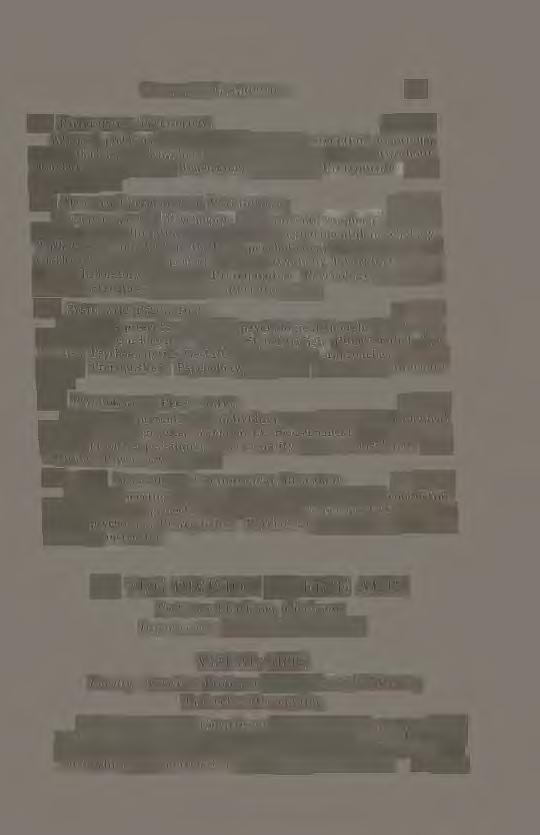
326. J..>BYCHOLOOY OF PEJtSO?U.L 1rrY. 3 hour.a this eourse p~w the indi"tidua,l. as a acpqi3l and biologicaJ unit. The nature, genesis, development, measurement, and othe,1: •nificant problems pertaining to personality will be considered. Prere(tUiaitee: Psychology 201, 202.

(01 or 402. SEMINAR IN PSYCHOLOGICAL RESEARCH 1-IJ houn
One class ttteeting a weelr. The work will cortsiat of eoliductmg directed research projects in the areas of experimental, social, or •PPlied :9aychplogy. Pr,ll!<luisitea PlllJc.4ology iol, 202, 3U,, and perDli1111ion of ~ctoi:.
IV. THE DIVISION OF Fl.NE ARTS
Professor Shackson, <Jhainnan. Depat"tmfflta: Visual Arts and Music.
VISUAL ARTS
FGCU!tr: ABSOCiate Professor Lillian Frank, Ohaf"t'man, Instructor Hassenpfiug
The courses in the Department of Visual Arts- a-re opel'l to all students in the -college. Some of the courses are a~nged so as to give the student who- does not pO!isess artistic abftitt a greatei' un derstanding and appreciation of the great "l\ttii'ltil of arl: o an ages.
102
OTTERBEIN COLLEGE
Other courses are to aid the talented student to become more efficient in the various techniques of self-expression and to prepare him for an art or a teaching career.
Through an arrangement between Otterbein College and Columbus Art School, advanced students with the recommendation of tbe department may take classes at the Art School. Credit toward a major and toward graduation will be given by Otterbein College.
For one semester hour of credit there is required one three-hour laboratory period or a one-hour class with a fee of $3.00 a semester hour for materials.
The department has the privilege of holding any completed work for one year for exhibition purposes.

THE BACHELOR OF ARTS DEGREE WITH A COLLEGE MAJOR OR MINOR IN VISUAL ARTS
A major consists of not less than twenty-four semester hours of art which shall include four hours of drawing, four hours of design, two hours of painting, two hours of sculpture or ceramics, Art 301-802, Humanities 201-202 three hours of which can be counted as art and an additional three hours of painting, sculpture or ceramics.
A minor consists of fifteen semester hours.
THE BACHELOR OF ARTS DEGREE WITH A TEACHING FIELD IN VISUAL ARTS
This course meets the requirements of the State of Ohio for tbe High School Teaching Certificate. The student must fulfill the minimum requirements for the Bachelor of Arts degree, meet the requirements of the Department of Education as found on page 130 and complete 24 semester hours of art, consisting of six hours of drawing and painting, three hours of sculpture, six hours of crafts, four hours of methods and observation, three hours of history of art and six hours of design, including lettering.
A student interested in preparing to meet the requirements of the State of Ohio for the special certificate which entitles him to teach art in the grades, one through twelve, may with careful planning complete the fifty hours of art required.
101 or 102. BASIC ART. I hours
Introduction to form, value, and color through experimentation with the media of drawing, painting, and sculpture. Required for students majoring in Elementary Education; not open to art majors. Offered each semester on sufficient demand.
COURSES OF INSTRUCTION 103
111. BASIC DRAWING. f/l hours
Introduction to various drawing media with continual emphasis upon composition. Drawing from memory and imagination to develop perception. Outdoor sketching in fall and spring. Offered in alternate years.
211-212. LIFE DRAWING. .+ hours
The study of structure and form of the human figure. Rapid sketch from the model with emphasis upon gesture. Offered in alternate years. Not offered in 1960-61.
121. BASIC DESIGN. !e houn
Problems in the arrangement of line, mass, space, texture, value and color with special emphasis on the nature of color. Required for students majoring in Home Economics and recommended for students majoring in Speech.

224. DESIGN AND COMPOSITION. !e hours
A continuation of the use of principles of design and the nature of color. Prerequisite: 121. Offered in alternate years. Not offered in 1960-61.
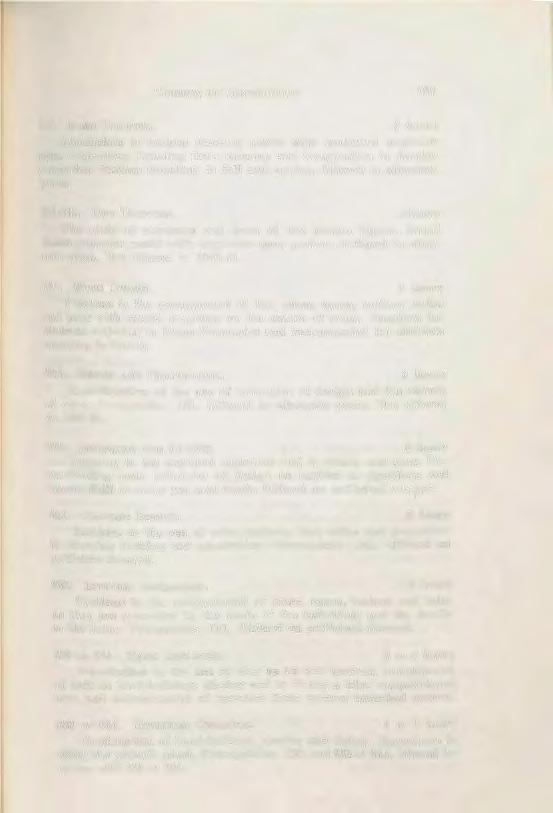
226. LETn:arNo AND LAYOUT. !2 hours
Learning to use standard alphabets and to create new ones. Understanding basic principles of design as applied to alphabets and layout. Skill in using pen and brush. Offered on sufficient request.
231. COSTUME DESIGN. I hours
Problems in the use of color, texture, line, value and proportion in planning clothing and accessories. Prerequisite: 121. Offered on sufficient demand.
232. INTERIOR DECORATION. ! hours
Problems in the manipulation of mass, space, texture and color as they are controlled by the needs of the individual and the family in the home. Prerequisite: 121. Offered on sufficient demand.
233 or 234. BASIC CERAMICS. ! or J hours Introduction to the use of clay as an art medium. Development of skill in hand-building, glazing and in firing a kiln. Acquaintance with and understanding of ceramics from various historical periods.
333 or 334. ADVANCED CERAMICS. f/l or J hourE
Continuation of hand-building, glazing and firing. Experience in using the potter's wheel. Prerequisites: 121 and 233 or 234. Offered together with 233 or 234.
1
01 IERBEU, C01LEGB
285 or 286. DESIGN IN MATEB.IALS. f .,, I ho"'"'
Application af princ:iplea af design in Uuee-dime1111ional pro\llem& Ji)Jcploration of creative deeign pouibilitiHs of :vu-iqua mat.ruaJ4· wood, metal, plaatfcs, etc, P:rel'e4Uiaite: 121 or the pernlis11<ioa ,,f the inatructor. Offered in alternate years.
24l or 242. WATERCOLOR PAINTING.
t Mltfl
Bxploration of various techniquea and uperiJnentatian wit.a color relationahipa in picture- CCIDIPOSition. PreNqlliBit.e: some couraes in drawing nd design or the permiuieo of the inatnict.or. Offered in alternate years.
3 1 or 342. A»V.u(CIJ>. WAT.ERC6LOB PAINTING. tcwnu,,:i:r with 241 or 242 which is a p.

261 or 262. OIL PAINTING. f ho..,..
Problems of picture composition in color. Personal expreaaion by aesthetic experiences. Ptereqtdtrite: so~ courses iil drawing and deajgn or the permieiOD of the instl'llctor. Offe~ in a t y "II. Not in 19

ADvANcm OIL PAINTING. to th r ith 261 or 252 wbiell is a prei:~ s hov.n
261 or 262. SOOLP'.l!UU.. i or :1 hout'1'
Modeling af the figure, aninuut and the abstract with em...,... upon three dimensional de.sign. Modeling in plastilene and ceramic cilay, making molds, easting in plaster and ~'.l'&Ulic 4Jay, Creatiri t• .,, f ,ort in the plastic m«:diwn. Pr,requiaite: some courlBeB in draw• iqg and deaign , ,. the penniaiOJl of the uastrw:tor, Offered in alter-.
yean.
1 Or 862. ADVANCED Scut.Prua& th with 2Gl or 262 which ui a p~~•
B H' 3 hott.n
281 or 282 .1. u..,, J.N EuillUlNTAJlY AaT EDUCATION, 8 hour•
The study of the charaeteriatica of child art and the significance ti e ehild'e art expression to his development as a creative individ, • i. 1' 1 • r '1 r • • · n arta and cra.fta .rel•ted to their use in the dementao school art ptogram. Two 2 hour period• per wee)[ with addi-1 ional ou· ,I,·
or 38'. METHODS IN SECONDA&Y AaT El>UCA'UON. 8 hoKfW
A coune for those arl atudenta who are preparing to teach in lll!COlldary ~ool. W y e)au and .laboratory peri9Clt-
a91 or 392. SPllCtU. PaoBLl!lMs m An. 1-1 laotirs Rae.rch Pl'O.H!Cta m art bmory. appreciatio;n, or aeative woril for QUalified studente. P-ermisaion ol the inah-uctor. May be repeated 30 not to exfted IIIl'l'Off L 6 boons. L2lbQ"'11wr fee Aacn1t&:tVBE. to be adju,ted. s ,,_s: de A study of the appreciation ,,i archltettu.re and it• eht·onoto&ical f VllloPJiient in Western civilization. Three classes each week. Course ee S2.00. Offered in alternate years. Not offered in 1960-61. 3o2. Burron or P4INTJNo AND SclJLP'l"URE. s hmlrs
A general 8Ul'Vey of painting and BClllpture from paleolithic times to the Present. Three classes t:4Ch week. Course fee $2.00. Offered in alternate Years. Not ottered ht 1960-61.
363 or 30'4. Hm MODERN PAIN'tJNd. hour A-atDd,Y qf IU\d 20th ~riea wow to of JQjor artiata and move~ents develo,e an u'ndei:atanding of Uie of the 19th work of the ~~t. classes each week. Course fee $2.00. Permieaion ot e in.et,ruc.tm-., Given upon sufficient requ¢.
HUMANITIES

281~202, EXPLo!UHo Tm: Ans. houn lntroduet1on to the basic principlea and interrelation of the creative •rta With emphasis on 1&1Diliari&ed with aesthetio nnaaic and the visual arta. concepta through direct Students are and atady of iniportQt works of art. and with techniquell through 1 • IDe!ltation ha explo.-to,ry periods. Recommended for atudenta .not lllaJoring in theae fields; acceptable with approval of the adviaer a Jneeting the Bf&duation reqµirem@ta in literature or Humanities. Three c1-u pe;rioda and one e.xpJoratory toE 1 ~ea. Cour- tee for 1.~"terial11 1 ngllah 208-204). period each week. $~.50 a semeste Not (~ open also
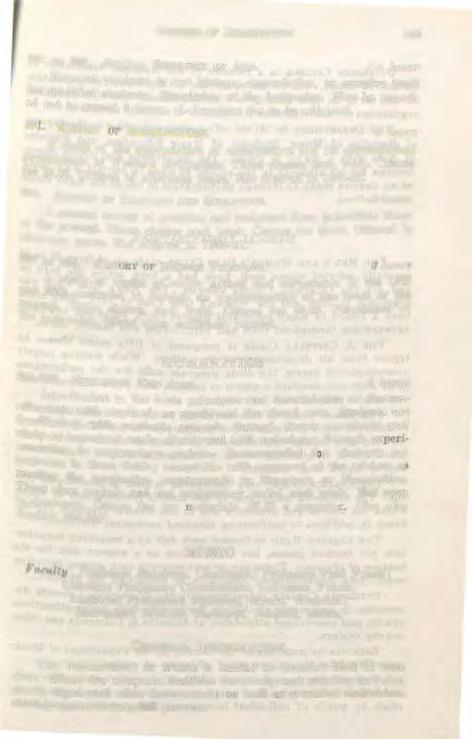
,..A I MUSIC
1 t : Professor Shackso1,1, Chaim)an; ProfeQOr Paul Frank;
Aaaoclate Protessors Chamberlain, Lawren!e Frank;
Aaaia~t Professor JQhnmm, lfyers, Westrich; lnm-ucton Bradley, Gerhardt, Leupold, Smith.
GENJ:;RAL INFORMATION DEPARTMENT OP MUSIC is locat.ed in Lambert Hall of Fine Art& There are adequate facilitlll!B fw atudy and praetiee in '\'Glee, l'i&IIO, organ and other instrumanu, as well as a recital auditoriom aeatlnir approxinun•l~ 260 penons.
106 OTTERBEIN COLI.EGE
0TTERBEJN COLLEGE is a member of the National Association of Schools of Music. The requirements for entrance and for graduation aa set forth in this catalog are in accordance with the published regulations of the National Association of Schools of Music.
THE DEPARTMENT OF MUSIC offers courses leading to the degrees of Bachelor of Music, Bachelor of Music Education, and Bachelor of Arts with a major in music. The department also offers opportunities for all students in the college to come in contact with music as an elective study or through participation in one of the many music organizations.
MUSICAL ORGANIZATIONS

THE MEN'S AND WOMEN'S GLEE CLUBS, made up of from 36 to 50 carefully selected voices each, have had a long, active life both on and off the Otterbein College campus. The Men's Glee Club was organized in 1909 and the Women's Glee Club in 1917. Both clubs have a record of many successful concert tours, radio and television appearances throughout Ohio and neighboring and eastern statea.
THE A CAPPELLA CHOIR is composed of fifty voices chosen by tryout from all departments of the college. While singing largely unaccompani1 d music, the choir program calls for the performance of at least one standard oratorio or cantata each year. Extensive concertizin - is planned each year.
THE Buss Caom is formed for the purpose of exploring the literature for such groups and for the purpose of providing neceeaary training and recital experience. The ensemble makes frequent appearances in sion by tryout neighboring towns to an students. in addition to a short tour. Admis-
THE C0LLEGE-CoMMUNITY ORCHESTRA is open to students by tryout. The orchestra cooperates in the annual presentations of major worka for chorus and orchestra and in the musical-dramatic productions, in addition to performing standard orchestral literature.
THE COLI.EGE BAND is formed each fall as a marching organization for football games, but is continued as a concert unit for the balance of the year. There are several concerts each season, including out-of-town performances. Admission by consulting the director. <>TrmBEJN COLLEGE cooperates with the Westerville Concerts Association in sponsoring an Artists Series with four major attractions yearly, and encourages attendance at concerts in Columbus and other nearby centers.
REcITAL8 by members of the faculty of the Department of Muaic are offered for the enjoyment of all lovers of music.
STUDENT REclTALS are given frequently to which the public is invited, and which students of music are required to attend. Studio recitals by pupils of individual instructors, designed for mutual eriti-


COURSES OF INSTRUCTION 107
clam and experience, are held from time to time. Students are expected to perform as their instructors direct, but should not appear in public performances without the consent of the instructor.
SPECIAL STuDENTS, not wishing to enter any of the courses leading to a degree, are not required to follow the prescribed outlines, but are given systematic work in whatever musical subject they elect. SCORES AND BOOKS RELATING TO MUSIC are found in the Centennial Library and in the departmental libl'ary. Students also have access to the facilities of the Westel'Ville Public Library. ENTRANCE REQUIREMENTS for degree courses are found on page 108. Private lessons in applied music, such as Piano, Violin, Voice, etc. may be had without formal entrance upon any degree course, by connltation with the chairman of the Department of Music.
Graduates of first-grade high schools are admitted to all degree courses, subject to satisfactory audition in music.
REQUIREMENTS FOR DEGREE COURSES
GENERAL STATEMENT CONCERNING THE DEGREE OF BACHELOR OF MUSIC
The course of study with concentration in applied Music demands conaiderable talent in a particular medium of performance, general musicianship, and a capacity for intelligent pl'actice. The goal toward which the student must work during all four years is the ultimate mastery of performance. The candidate for this degree must demonstrate adequate technique to produce an artistic performance. He should give evidence of thorough preparation in the theory and literature of music.
All degree candidates in music must pass an examination each semester in their major and minol' applied fields before a faculty jury. After satisfactory appearances on student recitals during all four years, the Bachelor of Music candidate must give a full recital in his major applied subject during his last yeal'. The required number of semester hours, one hundred twenty-four, must include at least ninety in music subjects. A maximum of thirtysix hours may be in academic subjecta. Students are required to take a minimum of sixty minutes of individual instruction per week in the major subjects in applied music throughout each year of residence. One semester hour credit shall be given for each three hours per week of practice, plus the necessary individual instruction, but no more than six hours credit will be allowed for the major subject during one semester. At least twenty-four semester hours of the last thirty hours required for a degree shall be earned in residence.

BACHELOR OF :MUSU}; PIAN0FORTB MAJOR
Note-It ia 1lllderstood that the follo~g reqw~ts are::, t.o be construed bl. any way as outlinea or couraea of study, but_Jll;. at indicate the co~patative demea of advanc;ement to be attam the various stages of the coul'sea.
PIANO REQUIREMENTS
Rtqttltements far Entl'ance ild
To entet the ftiur-year degree course in piano, tbe studen~ ~d be groonded in reliable technique. He ahoald pla7 all m&JO~ minor acalea correctly in moderatelp: rJlpid tempo, also l,roken atie in octave position in all keys and should have acquired systeDI methods of practice. as

He should have studied aon1e of the standard etud~, 1111 :' the Czerg, Op. 299, Book ~; J:Ieller, Qp, 47 and 46 {aceqrd1f Bach individual needa of the pupil): Bach. Little Prelu~es;. a-~~ ... to-two-part Inventions and compositiona corresponding m diffic\A-1•.J:
Bayd:Ji, Sonata No. 1~, G major No. 20 (Schlrmei:l •
Mozart, Scmata C Major No. a. F ... ajor No. 13 (Schirll1ef). OP. Variations on Nel cor Phi, Sonatas Op. '9., No.
1 • 1"- Noa. 1 and 2.
Schubert, lmp?Omptu Op. 1't, No. 2, etc. B. End of Second Year
At the eDd of the eecond year the student should have_ teJllll°! a ~que 8Ufficient to play acalea and arpeggios in r4pi~ t.o play scales m parallel and contrary motion, in thirds an II teeh· and in rhJthm1. Be should have acquired some c,ctave win~ nique and should have studied compositions of at least the fQJ]O · grades of difficulty: euier pi:eludes and fuguea from Well Tempel'M Clavichord
Baeh, French Suites tnd Partitaa. N
Beethoven, aonatas such as Op. 2, No. 1: Op. 26; Op. Si, o. CompowjtlO!lll by various romantic and modern eomposeT9-ce()d The lltudent ahould demonstrate hls ability to yead at sight a pan\menta and compositions ot moderate difficulty.
C. End of Fov.rtb Year . The candidate mu.at have acquired the ,principles <1f t~e tum and \'eloci'Y and their application to . ti octaves and double notes. H• must bave a re'per\nY LO • . i111'

COUBU8 OF 1Ntml1JCTION 109
l>rincil)al cl-.ic. rotnantic, •nd modern compoaitiQU which ahould fnclude ,such ,rorb as:
Bach, English Suitea, tooca~ Well 'J.'empered Qavichord.
Italian Concerto.
Beethoven, sona~ Op. 81~ NOii. 2 & a and. later except Op. 49.
ComJ)Ollitiona by Brahms, Chopin, Schumann and modern com•
Posers.
<:oncert1 by Mozart, Beethoven. Candida.tea must have had considerable experience in ensemble and J!1oald be capal11e sigbi readers.
BACHELOR OF Music, VOCAL MAJOR
Entrance requirements and standards up«:ted fot neceaaf111 eompJet1on of the four~r course of etudy:

VOICE REQUIREMENTS • Entrance Requtre.menta
To en~r the tour-year degree course in voice the student should J,e able to sing on pit.eh with correct phrasing and mU8ical intelligence ~dard IIOJlp in gOQd tngliah (the sJmpler. cl~~ are recpmmend. ). He should also demonstrate his ability to read a simple eong at ght and have a knowledge of the rudiments of Dtuie. · End of Second Year
At Ute end ot the aec:ond year the student should have iu:quired knowledge of breath ? P?ODW)Ciatjcm aa ClOntml, tone quality, priz!.ciple,e pf enunqiation, applied to singing. He should d~onstrat.e his bility to sing major, :piinor, and chromatic scales, arpepios, exerses for agijlcy, for auataining tone and the claaaic vocal embelliahents. Ire ahouJd demonstrate a kn~wledge of early Italian clauica, d the ebility " 1 oratorio, to aing one or more of the less ex~ting arlu of opera He should also have acquired uae ot one language in dition to English . • End of FourtJa '>'far . The candidatA !~ graduation should demonstrate the ability to 11 in three foreign languaaa, a knowledge of ~tative in both the d and the meuured ability to forma, give a knowledge of the creditable recit;aJ. general song literature
The repertory for immediate use should conaiat of at least four ,peratlc ariu, four oratorio arias, twenty cluaic, and twenty stand• ard modern etmga. . The candidate should have aompleted two yean al eneeml>le ~ginr, he must also have completed aufficJcmt piano study to enable im to play aeccnnpammenta average dif&alty.

110
OTTERBEIN COLLEGE
BACHELOR OF Music, VIOLIN MAJOR
Entrance requirements and standards expected for successful completion of the four-year course of study:

VIOLIN REQUIREMENTS A. Entrance Requirements
To enter the four-year degree course in violin the student should have an elementary knowledge of the pianoforte.
He should have the ability to perform etudes of the difficulty of the Kreutzer Etudes, Nos. 1 to 32, and works of the difficulty of the Viotti Concerto, No. 23, the de Beriot concerti, Nos. 7 and 9, the Tartini G minor sonata, and the easier Handel sonatas. B. End of the Second Year
At the end of the second year the student should have acquired the ability to perform works of the difficulty of the Viotti Concerto No. 22, the Spohr Concerto No. 2 and the easier Bach sonatas for violin and piano.
The student shoulo also give evidence of his ability to read at sight compositions of moderate difficulty, should demonstrate sufficient ability in ensemble to take part in the performance of easier string quartets and symphonic works. He should have acquired sufficient pianistic ability to play simple accompaniments. C. End of Fourth Year
The candidate for graduation should show an adequate technical grounding in scales, arpeggios, bowing and phrasing, and the ability to perform works of the di1ficulty of the Mendelssohn E minor concerto, the Bruch G minor or Spohr No. 8.
During the four-year course the student should have had not len than two years practical orchestral experience and two years of ensemble. He should have studied the viola sufficiently to enable him to play viola in ensembles.
He should further demonstrate adequate ability in sight reading and should be able to sight-read simple piano accompaniments.

BACHELOR OF MUSIC, ORGAN MAJOR
Entrance requirements and standards expected for successful completion of the four-year course of study:
ORGAN REQUIREMENTS A. Requirements for Entrance
To enter the four-year degree course in organ the student should have completed sufficient piano study to enable him to play some Bach inventions, Mozart sonatas, easier Beethoven sonatas, compositions by Mendelssohn, Grieg, Schubert, Schumann, etc.

COURSES OF INSTRUCl'ION 111
B. End of Second Year At the end of the second year the student should have acquired the ability to play the following compositions or others of similar grade: Bach (Schirmer Edition) Vol. I, No.12, Prelude. Vol. II, No.17, Fugue in G minor. (Ditson Edition) Selections from the Liturgical Year Organ Chorals.
Mendelssohn, Sonatas Nos. II, IV, V.
Guilmant, Sonata No. IV.
Hollins, Overtures C major--C minor.
Compositions for the modern organ by standard American and foreign composers.
H should also demonstrate ability in sight reading, in the ace. ent of the classic oratorios and masses, compamm · l · · th C I £. • laying including P aymg m e c eu,. service P • and in general
C. End of Fourth Year .
The candidate. for graduation shoul~ have a~ired ability in ransJ>OSitlon at sight, open score reading and improvisation. He th uld have a large repertory of organ literature of all schools
8 0 ·c cla&SI and modern, of the degree of difficulty indicated by th; follo~ng:
Bach (Schirmer Edition) Vol. IV, No. 4, Fantasia and Fugue, G minor. Vol IV, No. 7, Prelude and Fugue, B minor. Vol. II, No.12, Prelude and Fugue, D major. Book V, Sonatas.
Franck, Chorales, Piece Heroique.
Widor, Symphonies Nos. V to X.
Guiimant, Sonata D minor, No. 1.
Vierne, Symphonies Nos. I to V.
Compositions for modem organ of same grade of difficulty by standard American and foreign composers, such as Sowerby, Reger, Karg-Elert, Toumemire, Dupre, Liszt. VIOLONCELLO REQUIREMENTS A. Entrance Requirements
To enter the four-year degree course in 'cello, the student should be able to play all major and minor scales in three octaves and an etude by Duport or Merk. He should also be able to play one slow and one fast movement of a classical sonata, such as the one by Corelli in D Minor and a fast movement of the same difficulty as the first movement of the Concerto in B Minor by Goltermann.
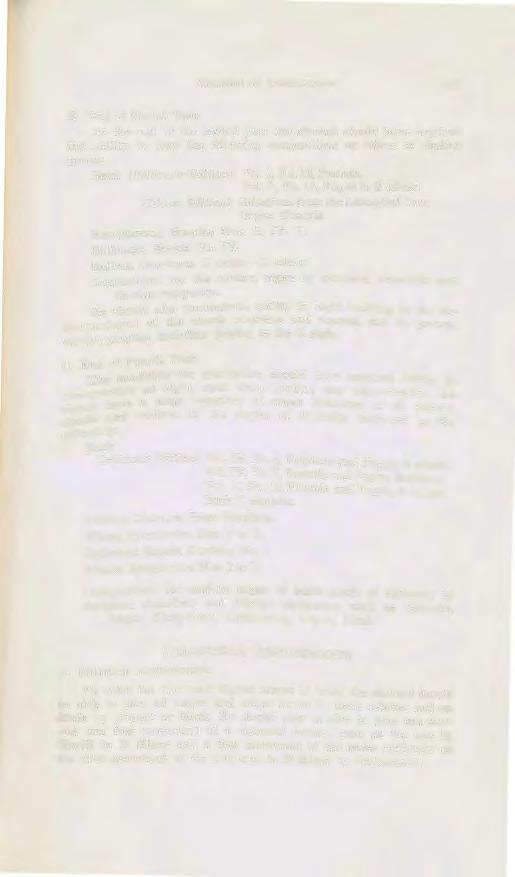

112
O'l"l'HRBEIN Cor,u:Gl!l
B. End of Second Year
At the end of the second year, the student should have acquired adeqwite techniQUe to play all major and minor scales and arpeggfOIS in four octaves at a rapid tempo as well as scales in octaves, thirda and sixths in two octaves.
The student should have studied compositiqns of the same difficulty as the St. Saens Concerto, ea'Bier movements from the Bach Suites for Cello alone and the Sonata in G Major by Sammartini.
Knowledge of the ensemble literature in!=luding the easier trios and quartets by Beethoven, Brahms, Haydn, and Mozart should be attained by the end of the second year. The student muat have acquired the altility to reBd ensemble and orchestra parts of moderat.e difficulty at sight, and to play simple piano accompaniments. C. EJJd of Fourth :Yeir
The candidate fQJ: grapuation must be able to play all majo:r and minor scales and arpeggios in four octaves at a rapid tempo with various bowings. He must be able to play at a moderate tenil)Oj scalea in oct.ava, thirds and si,xths in three octaves.
The student should have tn his repertory, two of the Beethoven; one of the Brahma 801latas for cello and piano~ an American compositbt in f(ll!m, a concerto of the same difficmlty as the Lalo concerto and a number of pieces such as: "At the Fountain'' by Davidoff' and the "Spinning Song" by Popper. . The candidate's playing Imowled_ge of the ensemble literature will include the classics and the moderns. He must not only be able to play a ptogram very well by memory, but he must also be able to demonstrate that he has enough ensemble and orchestral experience to put him in the professional class. He should be able to sight read simple piano accompaniments.
CLARINET REQmREMENTS
Enttanoe Requirementa
He should have acquired the fundamentals of good tone production, breath connol and hand position; an elementary knowledge of major and minor scales and arpeggios; and tbe ability to perfol'Ql material such as is contained in the Langenus Clarinet Methodt Part I. He should have studied one or more solo numbers of good musical quality not too difficult for him to play well. B. End of Second Year
At the end of the second year of the course the student should have acquired a tiierough knowledge of all the major a11d minor scales
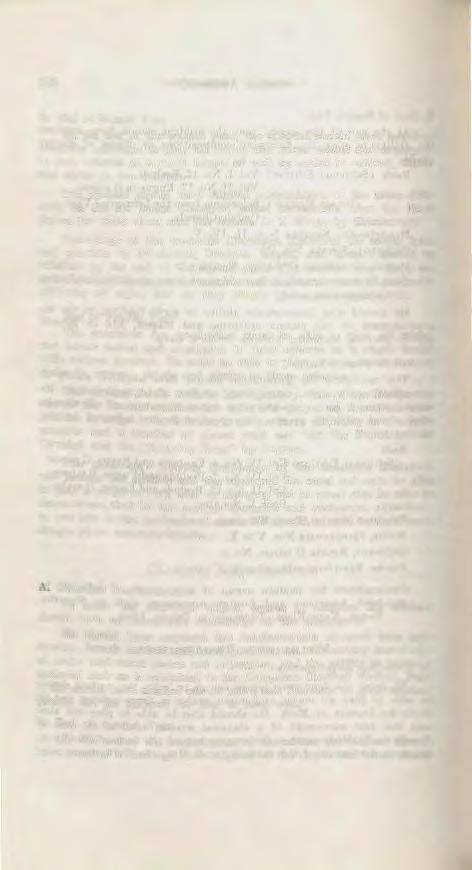
COlJUU OF lNlmWCTION 113
and arpeggios; have studied the etudea of Rose and the earli..- boob of Jean-Jean; have acwh:ed the abilitJ to perform well worka of the d.Uficulty of the Spohr Conoerto Ne. 1, the Weber Concerto No. 1 and GTand Duo CO!lcertante and the Sa.int-Saens Sonata.
The student should also give evidence of his ability to read at sight compositions of moderate difficulty, and should demonstrate sufficient ability to take part in the performance of eaaier ensemble numbers and hold the second clarinet chait' in symphonic worb. He should have acquin!d sufficient pianistic abDity to play simple .ccompanlmenta..

C. End of Fourth Year
The candidate for graduation should ahow adequaw, technique and muaicianahip for the competent performance of 1111ch worb as the Mozart Concerto, the Debuaay Rhaiiaodi• and the Weber Coneerto No. 2; also a knowledge of such sonatas for clarinet and piano as those by Brahma, Reger, Muon, Sow-e,by, Bernatein, and Tuthill.
During the four-year course the student lhould have at least two full years of practfoal orchestral experience, two yeara of band and two yean of ensemble. He sJ:onld be competent to hold the fl.rst clarinet chair in symphonic "fVOrka,
He should further demonstrate adequate abilitJ in sight reading. He should be able to sight-read abnple piano accompanimenta and be able to transpose fluently on the Bb clarinet parts written for C and A clarineta.
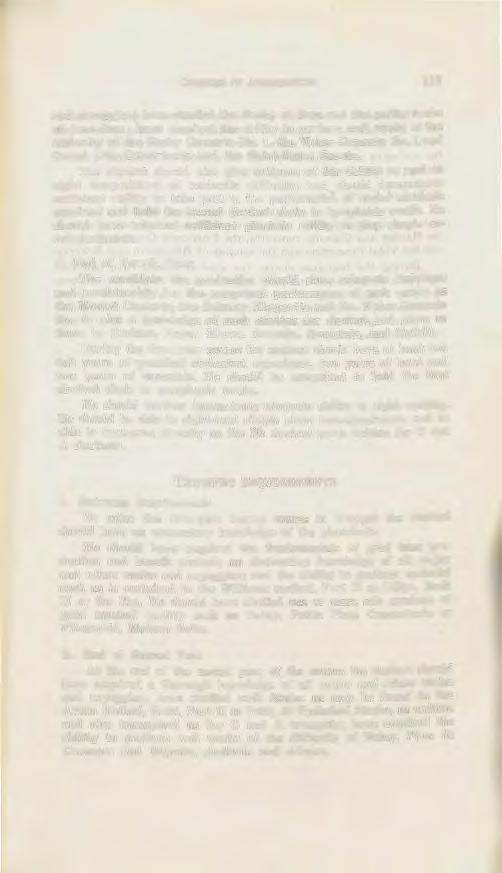
TRUMPET REQUJ.REMENTS A. Entrance Requirements
To enter the four-year degree course in trumpet the student should have an elementary knowledge of the pianoforte.
He should have acquired the fundamentals of good tone production and breath control; an elementary knowledge of all major and minor auch as ia scales and arpeggios; and the abllitJ to paform material contained in the Williama method, Part n or IJll:,a, Book II or the like. He should have studied one or more 1010 numbers of rood musical quality auch as Balay, Petite Piece Concertante or Fitzgerald, Modern Suite.
B. End of Second Year
At the end of the second year of the course the student should have acquired a thorough knowledge of all major and minor aealea and arpeggios; have studied such 6tudea as may be found in the Arban Method, Gatti, Part II or Petit, 15 Technical Etulul, as written and also transposed as for C and A trumpeta; have acquired the ability to Ccmcoun perform well and Ropartz, worka of the Aftdattt• au difficulty AU.gn,. of Balay, Piau d•
114
OTTERBEIN CoLLEGE
The student should also give evidence of his ability to read at sight compositions of moderate difficulty, and should demonstrate sufficient ability to hold second chair in the performance of works for orchestra and band. He should have acquired sufficient pianistic ability to play simple accompaniments.

C. End of Fourth Year
The candidate for graduation should show adequate technique and musicianship for the competent performance of such works as the Hayden and Giannini concertos, the Fitzgerald Concerto in A flat and the Vidal Concertino and the sonatas of Hindemith and Sowerby.
During the four-year course the student should have had four full years of orchestral and band experience and be able to transpose and play readily parts written for trumpets in all keys. He should be competent to hold first chair in orchestra and band, and be able to read at sight with facility. He should also be able to read simple piano accompaniments at sight.
